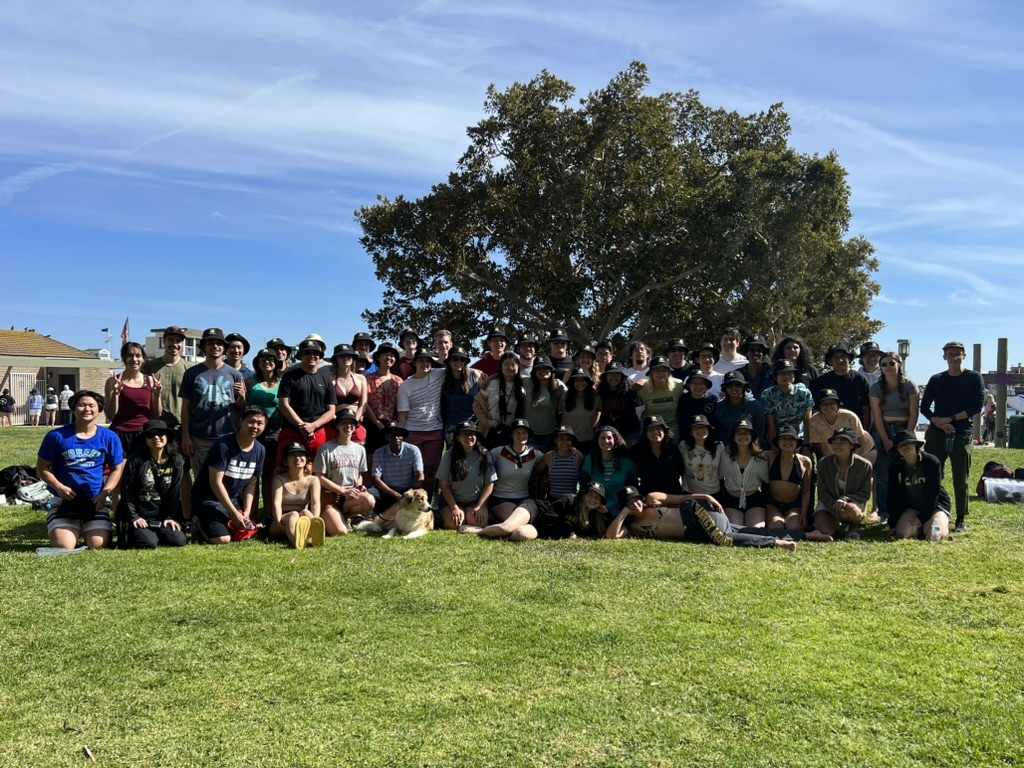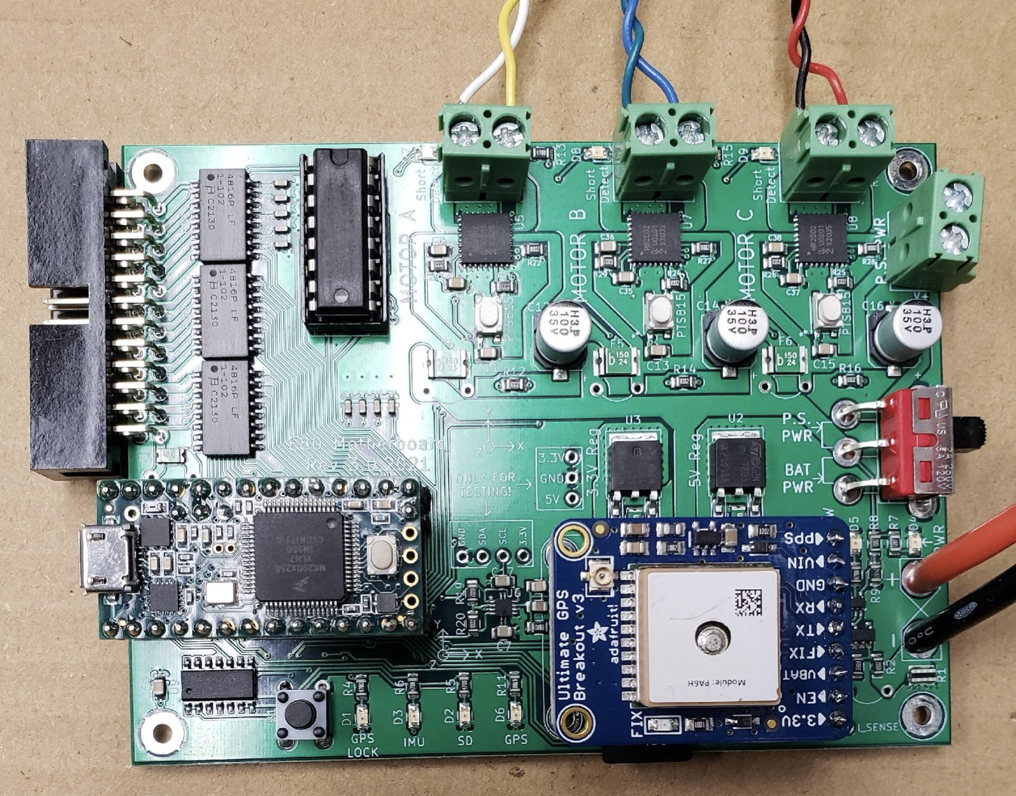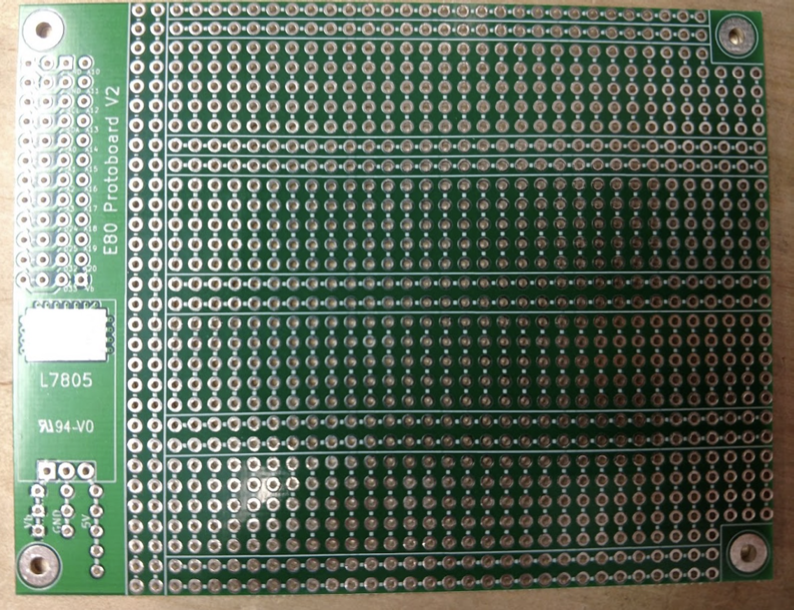E80 Project Kickoff Presentation
Agenda for Today
- Logistics & Schedule
- Project Resources
- Project Requirements
- Design Activity
- Project Deliverables
Soon this will be you!

E80 is about forming your engineering identity and learning how to do experiments
In this course you will learn how to…
Do Experiments
- Design instrumentation
- Gather, interpret, and present data
- Learn domain-specific skills (e.g., using op-amps and the wind tunnel)
Be an Engineer
- Deal with failure and learn from it.
- Professionally present your experiments.
- Know what good results look like.
- Work effectively on technical problems as a team under pressure.
Remaining Course Schedule Before Spring Break
| Week | Activity |
|---|---|
| Monday 2/24 |
|
| Monday 3/3 |
|
| Monday 3/10 |
|
| Monday 3/17 | Spring Break |
Deliverables for the Next Few Weeks
| Deliverable | Due Date | Notes |
|---|---|---|
| Lab Writing Assignment Resubmits | 3/7 | Individual |
| Lab 6 Technical Memorandum | 3/14 | Individual |
| Project Proposal | 3/14 | Team |
| Lab Resubmits | End of lab section in week of 3/10 | Individual/Team |
Activity: Think, Pair, Share Reflection
- What is the most important thing you’ve learned in E80 labs?
- What is the most important thing you’ve learned in E80 writing assignments?
- What technical skill do you most want to further explore in the project phase?
- What non-technical skill do you most want to further explore in the project phase?
Project Jump Start
Projects give you the space and freedom to design a robot of your own choosing, but there are a few elements that are common across almost all E80 robots:
- Autonomous operation and navigation
- Running and modifying the provided base software for the robot
To get you up to speed up on these common elements, we’ll have a more structured week of lab in the first week after Spring Break.
Project Timeline and Deliverables
| Week | Activity | Deliverable |
|---|---|---|
| 1 | Project Jump Start | A graded Submission Sheet due at the end of your section. |
| 2 | Breadboard Demo | Demo of breadboarded circuits to a professor. (Highly recommended, but not required). |
| 3 | Soldered Protoboard Demo | Demo of soldered circuits to a professor. (Highly recommended, but not required). |
| 4 | Integrated Robot Deployment | None, though deployment during your section at Phake Lake is the first chance to get data for your report. |
| 5 | Rebuild and Final Deployment | None, though deployment on Saturday at Dana Point is the second and last chance to get data for your report. |
| 6 | Analyze Data & Final Report Conferences | Rough draft of report due on Tuesday at noon. Individual conferences with professors. |
| 7 | Individual Final Report & Team Poster |
|
Final Report and Poster
Poster:
- Team deliverable.
- Given during presentation days.
- Aimed at a technically-knowledgeable audience to communicate the main results of your project.
- Will be presented during poster session. Your whole team is required to be there.
- You will answer questions about your poster and also interact with your peers.
Report:
- Individual deliverable.
- Individual conference with professor during analysis week.
- Presents the results of your team’s experiments, instrumentation, and results.
Deployments
You must collect data from your deployments for your final report.
Week 4: Bernard Field Station (BFS)
- First chance to get field data which is required in the final report.
- Need a deployment plan and launch checklist.
Week 5: Dana Point
- Bus leaves from Mudd at 6:30 am on 4/20/24 and returns ~4:00 pm. Be there!
Project Launch
Project Requirements
- Autonomous deployment for at least one minute with active position control.
- The deployment must end at a place where the robot can be recovered.
- Sensor package
- Deployed on or from your AUV
- Must use at least three sensors with at least two unique electrical interfaces.
- The IMU, GPS, and motor current sensors don’t count toward your three sensors.
What we give you to start from
Default Robot code base (under /Default_Robot/ directory in the Git repository)
Some key pieces:
- GPS surface navigation
- Diving
- Template code for integrating your own custom libraries (
ButtonSamplerlibrary)
You have a few options for launching at Dana Point

Kayaks are also available to accompany your robot out into the center of the harbor.
Resources: Staff Time
- Profs in lab hours
- Profs in office hours
- Engineering assistant hours
- Proctor hours
Resources: Stuff
- Anything in lab – sign out expensive stuff & submit error reports for anything that breaks.
- The E80 main PCBs and protoboards
- E80 frames, boxes and penetrator bolts
- Stuff outside lab: $50 budget per team as long as you follow purchasing instructions
Resources: Strict Purchasing Protocol
- Must be checked off by two instructors before buying
- Each team has only one designated buyer, all purchases from that one person
- Submit engineering purchase request form
- Include team number
- Specify Prof. Brake as approver
- Specify purchase is for E80
- We almost never agree to rush shipping … plan around 5-7 days lead time.
Resources: Where can I buy Stuff?
- Electronics – Digikey, Mouser, JameCo, SparkFun, Adafruit
- Mechanical – McMaster-Carr
Tips
- Make sure you consider package type! Buy adapter boards for surface mounted (SMT) parts.
- Make sure that you only buy parts that are in stock.
Resources: Our Waterproof Boxes
- Can fit about 6 wires in a penetrator bolt.
- Drill on flat faces of box: need flat rubber washers on box surface.
 |
 |
 |
Resources: Our Main PCB
- GPS / Teensy / IMU
- H-Bridges + resettable fuses
- Battery LED & switch
- Input protection
- User button
- Programmable LED
- Current Monitor / Flag
- 2x Check Solder Joints
- Connector

Resources: Our Protoboard
Protoboard connects to the motherboard with a right angle header and mounts above the main PCB.


Considerations when Picking Sensors
Package type – thru hole vs. surface mount w/ adapter board
Interface
| Interface | Difficulty | Details |
|---|---|---|
| GPIO | Easy | Using D3 and D4, can make sampler |
| I2C | Medium | Using SCL and SDA pins, some configuration |
| UART | Medium | Using RX and TX pins, some configuration |
| SPI | Hard | Needs to be implemented in software (bit banging) |
MUST BE IN STOCK!
Design Elements to Consider
 |
 |
- Electronics: Audio, Digital interfaces, Communication, Telemetry
- Software: Time of flight, Advanced navigation, Diving
- Mechanical: Shape, Sensor placement, Winch, Diving, Tethers
Final Project Design Exercise
Project Ideation Activity
Recall the steps of the Engineering Design Process.

Two dispositions for thought processes

Round 1: What do you want to measure?
- What do you want your robot to measure?
- Broadly in two categories: scientific and engineering relationships
- Scientific examples: water quality, distribution of temperature, salinity, turbidity
- Engineering examples: sensor accuracy, battery life, sensor or craft mechanical durability, velocity vs. power
Instructions
- Split into groups and find a big Post-It for your team
- Write your team number on the top
- Write down any quantities that you think would be interesting to measure with/on your robot.
- Focus on quantity over quality—we’re going for as many ideas here as possible.
- Feasibility doesn’t matter (yet)!
“Yes, and” wild stories
Round 2: Give feedback on delightful ideas
- Split your team in half. Half move to the big sticky on the right, half move to the big sticky to the left.
- Use the dots to vote for the idea(s) you find most delightful or fascinating (do NOT consider feasibility at this point).
- You get 3 votes each
- You may vote for the same idea more than once.
Round 3: How do you want to measure it?
- Review the feedback you got from your classmates’ dot votes.
- Select 3 ideas that you wish to explore further.
- For each idea, sketch a plot of the key figure that you hope to generate as the result of your project.
Think about the axes of your measurements
- What is the independent variable?
- What is the dependent variable?
 |
 |
Round 3: How do you want to measure it?
- What are your…
- Independent variable(s): e.g., \(t\), \(x\), \(y\)
- Dependent variable(s): e.g., \(y(t)\), \(z(x,y)\)
- Specify for each variable
- Units
- Expected ranges
- Resolution required (e.g., sampling frequency in time/space, sensitivity)
Round 4: What instrumentation will you use?
For each desired quantity, list out any ways that you can think of to measure that quantity.
- What is the transduction method (e.g., electrical, mechanical, chemical, combination, etc.)
- What types of sensors might you use? Think about what you’ve used or seen in E80 so far for inspiration.
Wrap Up
| Deliverable | Due Date | Notes |
|---|---|---|
| Lab Writing Assignment Resubmits | 3/7 | Individual |
| Lab 6 Technical Memorandum | 3/14 | Individual |
| Project Proposal | 3/14 | Team |
| Lab Resubmits | End of lab section in week of 3/10 | Individual/Team |
